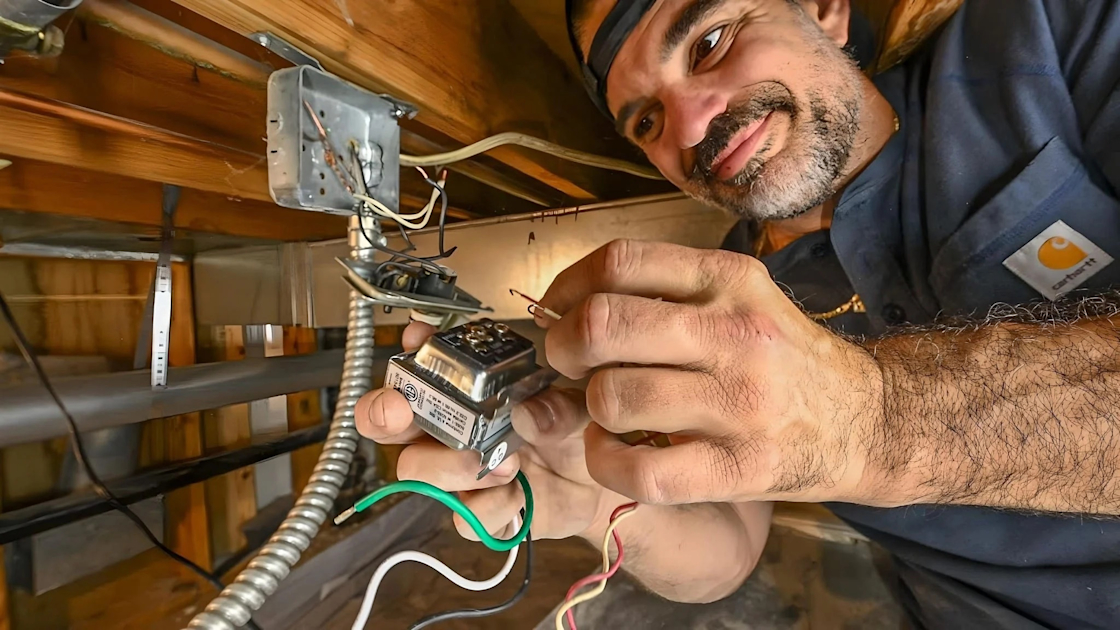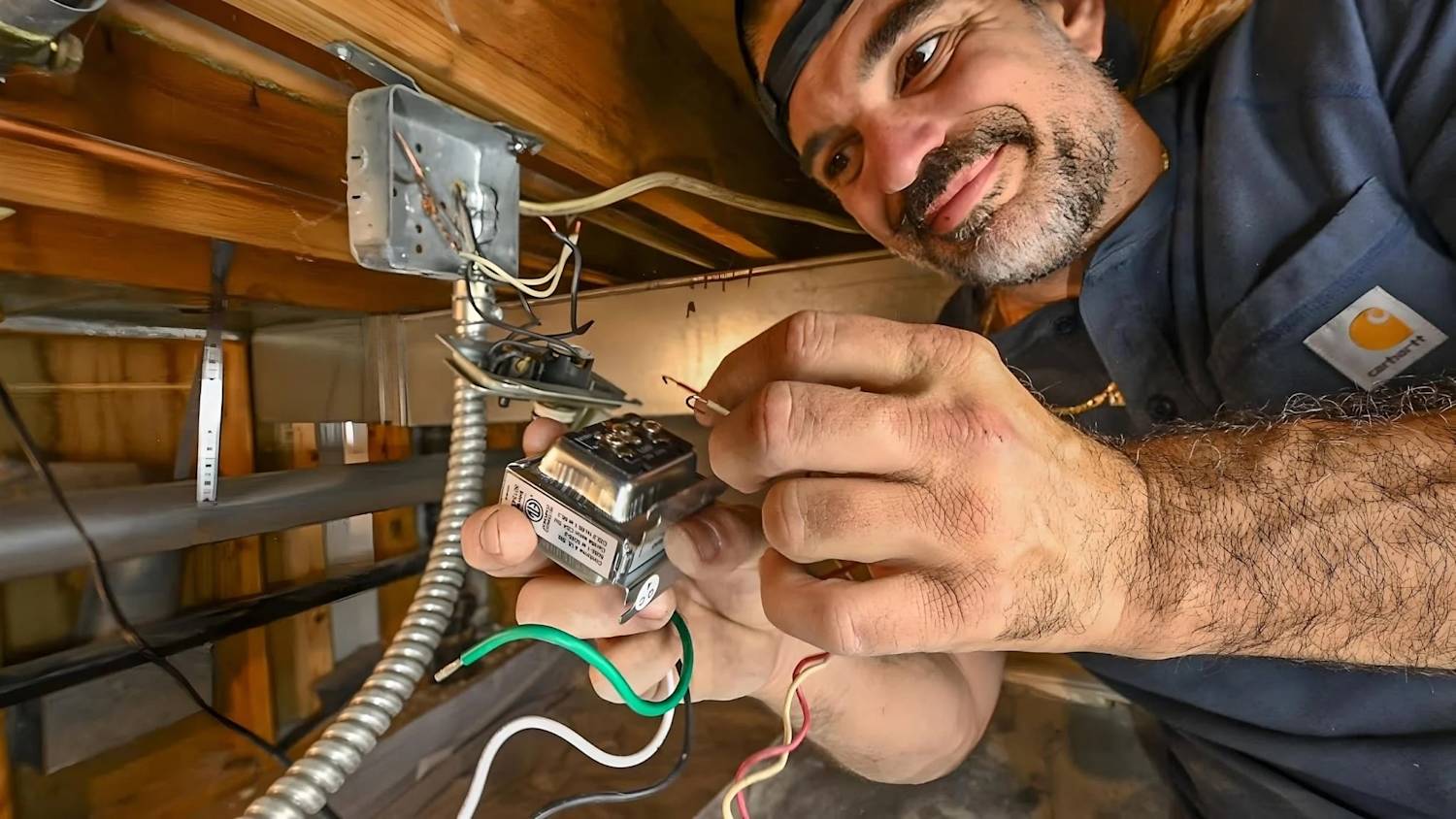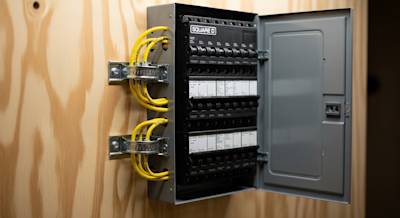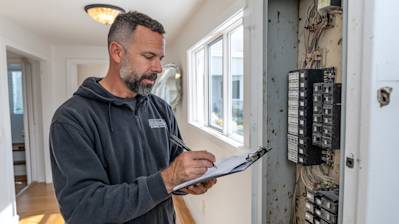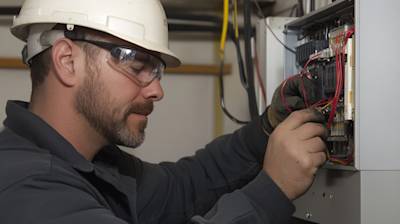Doorbell transformer wiring is an underrated aspect of setting up a smart home. The old days of loud and irritating doorbell ringing are gone, as today's smart doorbells come with a plethora of advanced features. However, these smart devices require a proper power supply to function correctly, necessitating the need for doorbell transformer wiring. This article will provide comprehensive information on the wiring process of doorbell transformers and their necessity.
Diving into Doorbell Transformer Wiring
The doorbell transformer's fundamental function is to supply power to the doorbell. It turns high voltage electricity into a lower voltage needed for your doorbell to ring without causing damage. Wiring a doorbell transformer correctly ensures the smooth operation of your doorbell, whether a traditional model or a modern smart doorbell.
Identifying Your Doorbell Transformer
- A doorbell transformer is commonly a small, rectangle-shaped device.
- It's usually found either in your chime box or somewhere near your electrical panel.
- It converts your home's electricity from 120 volts to a more manageable 16-24 volts, which is then used to power your doorbell.
The Necessity of Doorbell Transformer Wiring
Irrespective of whether you possess a traditional doorbell or a modern smart doorbell, they all require a power source to function efficiently. The process of doorbell transformer wiring ensures this. From ringing the chime to transmitting signals, every operation of the doorbell depends on a transformer.
Components Involved in Doorbell Transformer Wiring
-
Doorbell Button: This is the switch you press to ring the bell of a house. It acts as a circuit between the transformer and the bell.
-
Transformer: This serves as the power source, lowering the voltage from your home's standard voltage to a safer voltage for the doorbell.
-
Doorbell (Chime box): This is the part that makes the ringing sound when someone presses the doorbell button.
Step-by-Step Guide for Doorbell Transformer Wiring
Understanding Your Existing Wiring
Before you start wiring your doorbell transformer, it's critical to understand the current layout and functionality of your existing wiring. Standard doorbell systems have two wires that connect to two terminals on the transformer.
Removing Old Doorbell Transformer
Firstly, switch off the power. Then remove the old transformer, taking note of where and how it's installed, as your new transformer will likely need similar placement and connections.
Connecting The New Transformer
While attaching the new transformer, ensure that you connect the wires to the same terminals as they were on the old transformer to keep consistency with your wiring layout.
Checking Your Wiring
After installing your new transformer, double-check all your wire connections to make sure they're secure. Additionally, check that the correct voltage is reaching your doorbell.
Important Safety Tips for Doorbell Transformer Wiring
- Always turn off the electricity at the circuit breaker before starting any electrical work.
- Use a multimeter to verify that the power is off before touching any wires.
- If you're uncomfortable or unsure about accomplishing the task, always hire a professional electrician.
Understanding Troubleshooting
If your doorbell transformer wiring isn't operating correctly, you may need to troubleshoot the issue. Some common problems include a doorbell not ringing, buzzing sounds, or scorch marks on the transformer, indicating overheating. These could signify issues with your wiring, requiring professional help.
Understanding doorbell transformer wiring is imperative for a properly functioning doorbell. Be it a smart doorbell or a traditional model; correct transformer wiring ensures uninterrupted operation. Always remember, safety comes first. If any issues persist or if you're uncomfortable dealing with electricity, never hesitate to call a certified electrician.
FAQs About Doorbell Transformer Wiring
What is the purpose of a doorbell transformer?
A doorbell transformer is a device that converts the high-voltage electricity in your home into a lower voltage suitable for your doorbell system. This is important for the safe and efficient operation of your doorbell. Without a transformer, the higher voltage could damage your doorbell or create a safety hazard.
Where is my doorbell transformer located?
This can vary depending on the specific installation, but generally, doorbell transformers are found near the main electrical panel, in the attic, in the basement, in the garage or mounted on a wall near the doorbell itself.
How do I correctly wire a doorbell transformer?
While the specific steps can vary somewhat depending on the doorbell system and transformer you're using, the process generally involves connecting the transformer to both your home's electrical system and your doorbell. A common approach is to wire the black wire (hot) from the transformer to the black wire from the power source, and the white wire (neutral) from the transformer to the white wire from the power source. The transformer green wire (ground) should be attached to the house's grounding method, be it a copper pipe or the ground wire from the power source.
What kind of wire is used for a doorbell transformer?
Typically, a doorbell transformer wiring is done using a relatively thin, low-voltage wire. A common choice is 18 or 20 gauge wire, which is more than sufficient to handle the power requirements of most doorbell systems.
Can a doorbell transformer be wired for two doorbells?
Yes, a single transformer can be wired to support two doorbells. This is performed by using a two-chime doorbell system or wiring two separate bell systems in parallel. However, keep in mind that the transformer must be rated to handle the combined electrical load of both doorbells. If it is not, you risk burning out the transformer or causing other electrical issues.
How can I tell if my doorbell transformer wiring is faulty?
If your doorbell isn't ringing, or is operating sporadically, it may be a sign of faulty wiring or a faulty transformer. You can use a multimeter to test the voltage of your transformer. A reading significantly lower than the transformer's rated output could indicate a problem with the transformer or the wiring. Always practice safe procedures when working with electricity, including turning off the power before performing any tests or repairs.
Can I replace a doorbell transformer wiring myself?
Yes, you can, but it is important to be aware of the risks involved when working with electricity. It’s recommended to shut down the power supply from the circuit breaker before beginning any work. If you're uncomfortable or unsure of any steps, it's always best to hire a professional electrician.
Do I need to upgrade my doorbell transformer for a smart doorbell?
Some smart doorbells will require a more powerful transformer, potentially requiring a change in your doorbell transformer wiring. Check the specifications of the smart doorbell to ensure your current transformer wiring can handle its power demands. If not, you may need to upgrade your transformer and adjust the wiring accordingly.
Pros & Cons of Doorbell Transformer Wiring
Pros of Doorbell Transformer Wiring
Improved Power Support
One of the significant benefits of doorbell transformer wiring is the improvement of power support for doorbells. Below are some of the reasons why this advantage is paramount:
-
Voltage Conversion: Doorbell transformers convert standard house current (110-120V) into lower voltage (16-24V) that is safe for your doorbell system. This conversion ensures that your doorbell functions optimally without overheating or experiencing power overload.
-
Power Efficiency: By properly managing power usage, doorbell transformer wiring can contribute positively to energy efficiency, leading to a reduction in your overall electricity costs.
Compatibility with Different Doorbell Systems
Doorbell transformer wiring is compatible with varying doorbell systems, including traditional mechanical doorbells, modern wireless doorbells, and video doorbell systems. This compatibility broadens your options when choosing a doorbell system for your home.
Long-Lasting Performance
With doorbell transformer wiring, you enjoy a long-lasting performance. Because the transformer controls the electricity flow to the doorbell, it helps to prevent problems related to power surges, maintaining the longevity of your doorbell system.
Cons of Doorbell Transformer Wiring
Complex Installation
One downside to doorbell transformer wiring is complex installation. Here are some factors that might complicate the installation process:
-
Need for Technical Knowledge: Installing a doorbell transformer requires understanding the wiring process, making it potentially complex for those without electrical expertise.
-
Potential for Mistakes: Without proper knowledge, errors during installation such as improper wiring could lead to system failures, safety risks or even electrical fires.
Cost
Another potential disadvantage of doorbell transformer wiring is the cost involved. Apart from the price of the doorbell transformer itself, there may be installation costs, especially if a professional electrician is required.
Limited Accessibility
Doorbell transformers are often installed in relatively inaccessible locations such as the attic or garage. This can make it difficult to access the transformer for troubleshooting, replacement, or repairs.
Mixed Considerations about Doorbell Transformer Wiring
Upgrade Requirements
If you're upgrading from a traditional doorbell to a smart doorbell, you might need to upgrade your doorbell transformer wiring too, as ding-dong type doorbells often require less power compared to smart doorbells. This can either be seen as an advantage, allowing you to upgrade your system for optimal usage, or as a disadvantage, being a potential extra cost and effort.
Risk of Power Surges
Power surges can damage your doorbell transformer, rendering your doorbell system ineffective. Though transformers provide a certain level of protection, they're not immune to persistent or significant power surges. However, it's worth noting that such risk can be minimized by using surge protectors or choosing high-quality doorbell transformers.
Summary
The process of doorbell transformer wiring evidently demands accuracy and caution. Missteps can lead to issues such as malfunctioning doorbells or jeopardized safety. However, when done appropriately, it increases the lifespan of the doorbell system, improves the quality of the chime, and helps avoid potential power overloads. For those uncomfortable with DIY techniques, seeking the help of a professional is always a safe bet.
Doorbell transformer wiring can be seen as an essential part of maintaining a functional and efficient home. It ensures that your house connectivity is top-notch, delivering direct and immediate notice whenever visitors are at the door. But remember - while it's definitely worthwhile to understand the wiring process, it shouldn't be attempted without the necessary skills and knowledge. Safety always comes first.
Whether you're a keen DIY enthusiast or simply want to understand more about how your household systems work, getting to grips with doorbell transformer wiring is a great step. This simple though critical process not only forms the backbone of your doorbell’s operation but also gives you the opportunity to learn more about the electronics in your home. Just make sure to respect the process, double-check everything, and never rush - your doorbell will thank you!
About Sagan Electric
Welcome to Sagan Electric! We're a locally born and bred Sacramento, CA business with a commitment to delivering top-notch electrical services and an unbeatable customer experience. Our team of certified electricians brings decades of experience in handling residential and commercial projects of every scale. But we don't just rest on our knowledge and expertise; we couple it with unparalleled passion and dedication. Why? Because we believe in the power of electricity to transform lives, and we love being part of that transformation!
Tags: doorbell transformer wiring, home improvement, electrical wiring,

